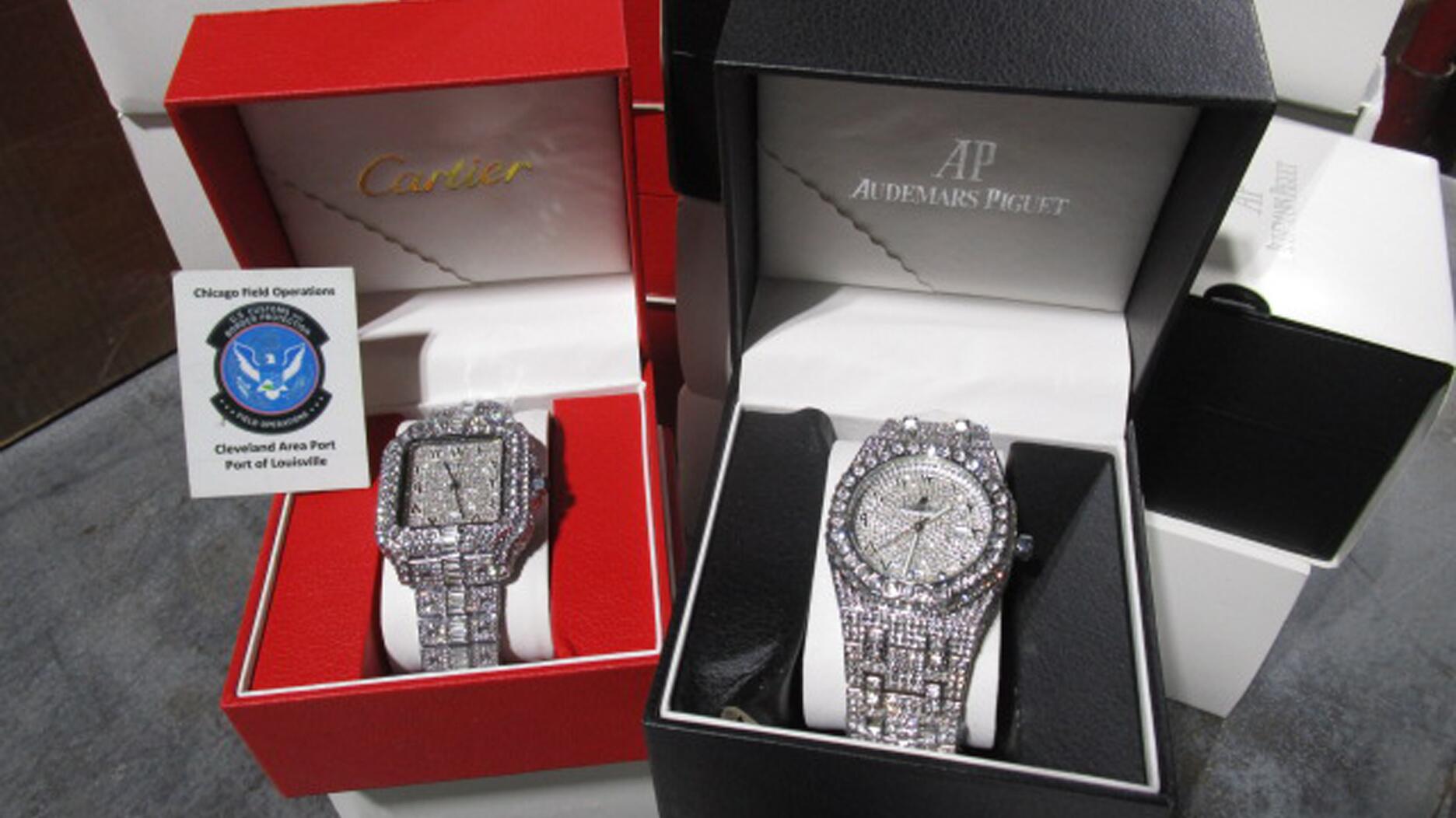Jewelers Sue Brink’s After Losing Merchandise in Heist
Brink’s is taking legal action of its own after the parties disagreed about compensation for the missing goods.

The value of the stolen goods is now the subject of two legal actions, one filed by the jewelers who were robbed and the other by Brink’s.
The truck was loaded with exhibitors’ merchandise from the International Gem and Jewelry Show, held in San Mateo, California, from July 8-10, and was heading to another show at the Pasadena Convention Center, scheduled for July 15-17.
Along the way, the driver pulled into a Flying J rest stop, where an unknown suspect(s) broke into the locked vehicle, stealing 22 of the 73 bags of jewelry.
The exhibitors reported their losses at more than $100 million and expected to be compensated, but Brink’s calculated the losses at less than $10 million.
Brink’s filed a legal complaint in New York on Aug. 4, seeking a declaratory judgment against the jewelry companies, claiming they “substantially under-declared the value of their shipments on the pickup manifest.”
The manifests for the 22 missing shipments declare a total value of $8.7 million, said Brink’s.
Court documents detail the terms of the contracts with the exhibitors, including a stipulation that customers must declare the actual monetary value of the shipment.
The lawsuit also sheds some light on what happened the night of the robbery.
The two armed guards, named only as Driver 1 and Driver 2 in court documents, left around midnight. Driver 1 drove the truck to the rest stop and left Driver 2 asleep in the truck.
After spending about 30 minutes inside grabbing food, Driver 1 returned to the truck to find the red plastic seal around the trailer was cut, as was the trailer’s rear lock. Driver 2 said he did not see or hear anything unusual.
There were no closed-circuit televisions or other surveillance devices near the parked truck, said Brink’s.
The jewelers who lost goods in the heist filed their lawsuit against Brink’s Monday in Los Angeles County Superior Court, alleging breach of contract and negligence and asking the court to award them hundreds of millions of dollars in damages.
Additional defendants include the two drivers, a Brink’s sales and show support specialist, and Pilot Flying J, the owner of the Flying J rest stop.
The lawsuit outlines several complaints, including the alleged negligence of Brink’s and the drivers, a hard-to-read contract, misleading advice from a sales specialist regarding insurance, and the failure of the rest stop to provide a safe environment.
A Brink’s spokesperson said the company does not comment on active litigation.
The lawsuit states: “This action seeks to rectify the wrong Brink’s has heaped on top of the theft its drivers practically invited to happen.”
The plaintiffs took issue with the behavior of the drivers, particularly Driver 1 being asleep in the sleeping berth while on the clock, though Brink’s states in its lawsuit that the driver’s behavior was in line with what U.S. Department of Transportation regulations allow.
Brink’s also did not use a secured armored vehicle, but rather “an 18-wheeler semi-truck/trailer combination” with “an easily defeated lock on the trailer,” court documents state.
Regarding the contract, the suit alleges the terms written on the reverse side of the pickup manifest were illegible, noting the small font size and poor color contrast, and “rife with inconsistent provisions.”
The jewelers also said they had no time to negotiate the terms, as the pickup manifest had to be signed before goods were transported.
As for the issue of underinsurance, the jewelers claim they were advised by a Brink’s employee named in the lawsuit to understate the value of the goods to cut down on shipping costs.
They claim they were not warned that doing so would mean they would be unable to recover the full value of their goods in the event of a loss.
The jewelers also allege they were not told their goods would be left unattended in an unsecure location, which they pin on Flying J parent company Pilot Flying J.
The lawsuit accuses Pilot Flying J of breaching its duty to maintain a secure environment, failing to provide adequate lighting and other security matters, particularly when its rest stops are frequented by many drivers with high-value cargo.
“Brink’s leaving valuable property unattended in a poorly lit, remote location, in a poorly secured trailer parked in a position where access to it could not be observed by the people charged with the very duty of protecting it, amounts to willful misconduct and/or gross negligence that precludes enforcement of any contractual limits that would otherwise benefit Brink’s,” court documents state.
The plaintiffs said they have suffered emotional stress and have been “deprived of the ability to earn a living.”
Many of the jewelers stated in the lawsuit that trade shows are their only source of income, and now they are missing a significant amount of inventory.
The defendants are asking for damages in the amount of $100 million for the direct loss of property and an additional $300 million in damages, as well as attorneys’ fees and other costs related to the lawsuit.
The Latest

Consumers shared concerns about prices, inflation, tariffs, trade, and politics in the survey’s write-in response section.

In February 2026, the auction house will move its headquarters to the former Steinway Hall, a neoclassical landmark on Billionaires’ Row.

The new show will take place Jan. 23-25, 2026.

How Jewelers of America’s 20 Under 40 are leading to ensure a brighter future for the jewelry industry.

The former BHP Billiton leader and Gemfields chairman is remembered for his influential leadership throughout his 50-year mining career.


The LVMH-owned brand has partnered with the costume design union to revamp its award for 2026.

The luxury titan inked a deal to acquire an initial minority stake in the jewelry manufacturer with a pathway to full ownership by 2032.

Roseco’s 704-page catalog showcases new lab-grown diamonds, findings, tools & more—available in print or interactive digital editions.

The company’s curation of unsigned vintage and estate jewelry debuted at the Bloomingdale’s in Costa Mesa, California.

Helzberg’s Chief Retail Officer Mitch Maggart shared details about its tests of a new store concept rooted in an elevated luxury experience.

Jewelers of America execs and National Jeweler editors discuss tariffs, the sky-high gold price, and the engagement that broke the internet.

The luxury goods company said founder Ippolita Rostagno will remain at the brand’s helm.

Laura Burdese, who joined the Italian luxury brand in 2022, will take on the role in July.

The National Jeweler editors revisit the most noteworthy industry happenings and design trends from 2025.

Need a gift for the cat lover who has everything? Look no further than our latest Piece of the Week.

It purchased the “Grosse Pièce,” an ultra-complicated Audemars Piguet pocket watch from the ‘20s, for a record-breaking price at Sotheby’s.

The lab-grown diamond grower now offers custom engagement and fashion jewelry through its Kira Custom Lab Jewelry service.

Chandler got his start at Michelson Jewelers and has served as DCA president and CEO since 2001. He will retire at the end of the month.

The boutique is slated to open this week inside Terminal 8, offering pre-owned Rolex watches and more to international travelers.

Sponsored by Digital Monitoring Products

The special-edition egg pendant ingested in a New Zealand jewelry store was recovered after a six-day wait.

Associate Editor Natalie Francisco plays favorites with Piece of the Week, selecting a standout piece of jewelry from each month of 2025.

The “Love and Desire” campaign is inspired by the magic that follows when one’s heart leads the way, said the brand.

Two awardees will receive free tuition for an educational course at the Swiss lab, with flights and lodging included.

Berta de Pablos-Barbier will replace Alexander Lacik at the start of January, two months earlier than expected.

Sotheby’s held its first two jewelry sales at the Breuer building last week, and they totaled nearly $44 million.

Winners will receive free registration and lodging for its fourth annual event in Detroit.



























